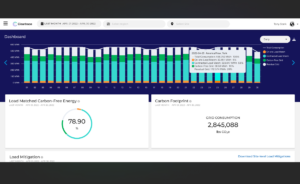24/7 carbon-free energy (CFE) as a strategy is often looked at as near-impossible, or at least unaffordable–but Iron Mountain recently announced a landmark deal that is poised to challenge the skeptics. Iron Mountain’s innovative 24/7 CFE solution for data center customers–in partnership with RPD Energy, Direct Energy and Cleartrace–is providing a strong model, backed by automated and auditable hourly data on their energy and carbon emissions, for companies to follow as they look to rein in emissions from data center use in their operations and supply chains.
Iron Mountain’s new solution is good news for the environment–but for corporations, this also shows that granular data may be the first “toe in the water” they need to satisfy a growing range of rules and requirements in the United States, the European Union and elsewhere for disclosing their carbon impacts.
The new paradigm: 24/7 carbon-free energy
Iron Mountain’s announcement outlines a landmark series of transactions that further commits the company to 24/7 carbon-free energy (CFE) electricity procurement. The company is pursuing a 24/7 CFE strategy, which sources and more importantly proves that renewable energy is supplying the hourly forecasted needs for a variety of Iron Mountain facilities–”including records and data management sites, data center facilities, customer storage and secure-shred sites, as well as Crozier climate-controlled fine art storage facilities.”

Why is this important? While many companies claim to power their operations with 100 percent renewable energy, this is typically done on an annual matching basis–purchasing RECs annually to offset energy consumption calculated from monthly utility bills. Annual matching is often an important starting point for corporate decarbonization, but is also very limited in terms of transparency and granularity of data that ESG and sustainability leaders can glean from the process.
Iron Mountain’s approach goes significantly further by shifting to hourly load matching–where each hour of electricity consumed is matched to an hour of clean energy generated. 24/7 hourly load matching helps drive total decarbonization throughout the power grid because there is a more direct connection between energy that is being sourced and consumed.
Building a flexible and sustainable strategy

Iron Mountain’s strategy has focused on securing an hourly load-matched supply of local CFE across multiple grid regions and over 250 utility accounts–serving the needs of its end-customers–that draws on a portfolio of multiple wind and hydro generation assets from separate owners. This mixture of variable and more “baseload” renewable generation provides a more stable base of CFE to power its data center operations. As renewable energy is sourced and electricity is consumed by data center operations, data on electricity use and related carbon emissions across the 100+ building portfolio will be captured by Cleartrace’s hourly carbon accounting and energy traceability platform. The load-matched data will equip Iron Mountain with a near-real time picture of how generation and consumption are matched for its performance and impact analysis.
In addition, Iron Mountain has procured clean energy over a four-year period, enabling its energy procurement team to support construction of new, additional generation as this initiative grows. This approach provides the broadest application of 24/7 CFE procurement yet devised, proving the efficiency of scale, while providing the data backbone to prove out the impacts of its hourly CFE offering with automated consumption and production data.
When carbon accounting is still being refined, focus on the ultimate goal
When Chris Pennington, Iron Mountain’s director of energy and sustainability, spoke on our podcast, he had this to share about the larger journey Iron Mountain is on:
The way I think about it today is that my ultimate measuring stick is going to be, “what is the carbon emissions from our business within the local grids in which we operate? And are we making progress? Are we making it better?
And today, just to be clear, market-based accounting for GHG emissions, which says I can use a Texas wind REC to offset my New Jersey footprint… That doesn’t really help me in my personal journey here to say, “are we really decarbonizing local grids?”
Location-based carbon accounting, which is the other syndicated approach for reporting, also doesn’t help me because it doesn’t allow me to actually claim the benefits of locally-produced clean power contracts. And so to be clear, there’s a bit of a void here in terms of the optimal measuring stick for how we measure our ability to go into a market, sign up new contracts for new, locally-produced clean energy, and use that to offset our local load.
And that’s where the ecosystem is starting to build in terms of solution providers that help with this. And this is where Cleartrace helps us understand that. We’re looking to see where the puck is sliding to and we’re thinking that ultimately zero carbon is where we have to get to. It should be local. Cleartrace is helping us see where we’re at today. And I think that as protocols shift in this direction, we’ll be well-positioned then and be able to be out ahead of the pack.”
Cleartrace is proud to assist Iron Mountain and its partners in energy supply, RPD Energy and Direct Energy, in bringing this innovative solution to Iron Mountain’s data center customers, and look forward to continuing to grow adoption of approaches like these.


